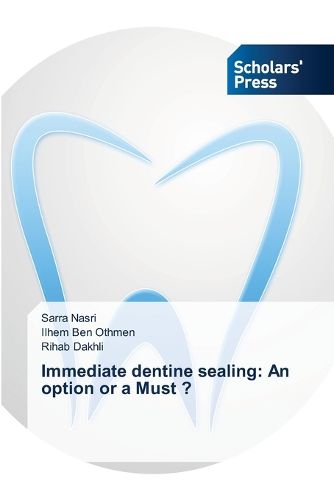Readings Newsletter
Become a Readings Member to make your shopping experience even easier.
Sign in or sign up for free!
You’re not far away from qualifying for FREE standard shipping within Australia
You’ve qualified for FREE standard shipping within Australia
The cart is loading…






In restorative dentistry, preserving tooth tissue is a priority. Therefore, minimally invasive restorations like inlays, onlays, and laminate veneers are used. However, dentin tubule exposure is unavoidable regardless of the amount of tooth substance removed. Interim cementation materials often fail to provide adequate sealing, leaving exposed dentin vulnerable to bacterial microleakage and chemical and mechanical stimuli during procedures such as impression-taking, rinsing, drying, function, and the removal of provisional materials. To address these issues and protect the pulp, Pashley et al. introduced the immediate application of a dentin-bonding agent after tooth preparation and before impression taking in the early 1990s. In conventional procedures, dentin sealing occurs at the bonding stage of the final restoration, which leaves exposed dentin susceptible to bacterial infiltration during provisionalization.This work explores the evolution of the bonding procedure and highlight the specific challenges associated with dentin bonding in a first part. Then, it discusses the development and benefits of the immediate dentin sealing procedure.
$9.00 standard shipping within Australia
FREE standard shipping within Australia for orders over $100.00
Express & International shipping calculated at checkout
In restorative dentistry, preserving tooth tissue is a priority. Therefore, minimally invasive restorations like inlays, onlays, and laminate veneers are used. However, dentin tubule exposure is unavoidable regardless of the amount of tooth substance removed. Interim cementation materials often fail to provide adequate sealing, leaving exposed dentin vulnerable to bacterial microleakage and chemical and mechanical stimuli during procedures such as impression-taking, rinsing, drying, function, and the removal of provisional materials. To address these issues and protect the pulp, Pashley et al. introduced the immediate application of a dentin-bonding agent after tooth preparation and before impression taking in the early 1990s. In conventional procedures, dentin sealing occurs at the bonding stage of the final restoration, which leaves exposed dentin susceptible to bacterial infiltration during provisionalization.This work explores the evolution of the bonding procedure and highlight the specific challenges associated with dentin bonding in a first part. Then, it discusses the development and benefits of the immediate dentin sealing procedure.